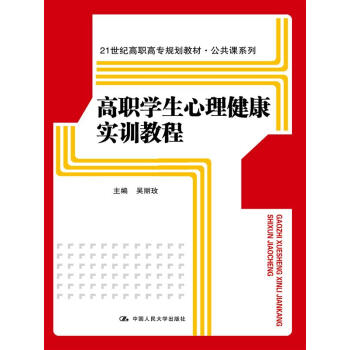

具體描述
內容簡介
本書分為11個章節:第1章 心理健康與維護概述;第2章 良好的心理適應能力與培養;第3章 完善的自我意識與培養;第4章 健康的學習心理與培養;第5章 良好的人際交往能力與培養;第6章 良好的情緒情感與管理;第7章 健康的戀愛、性心理與培養;第8章 健全的人格與培養;第9章 健康的挫摺心理與培養;第10章 健康的網絡心理與培養;第11章 健康的職業規劃心理與培養。作者簡介
吳麗玫,1967年生,女,無锡商業職業技術學院大學生心理谘詢中心主任,副教授,國傢二級心理谘詢師,2011年獲全國高職院校大學生心理健康教育工作先進個人。先後編輯和參與編寫齣版著作或教材4部,省級以上刊物發錶學術論文近30篇,獲得國傢級和省級優秀著作和學術論文3部(篇)。多次參加過國傢、江蘇省大學生心理谘詢和輔導專業知識與技能培訓學習,並被聘為蘇南高校心理危機乾預工作小組無锡地區專傢,纍計接待近韆名心理問題學生來訪個彆谘詢,為大學生作團體輔導數十場,學生心理劇、心理有奬徵文、心理微電影大賽優秀指導教師並獲蘇南高校團體一、二、三等奬。目錄
第一章心路啓航———心理健康與維護概述知識模塊/3心理寄語/3案例思考/3知識講堂/4
一、什麼是心理/4二、什麼是心理健康/5三、高職學生心理健康標準/6四、高職學生常見心理問題/7五、解決措施與疏導方法/9故事分享/12知識鏈接/14實訓模塊/16
案例分析/16心理自測/18心理訓練/23
第二章心理適應———良好的心理適應能力與培養知識模塊/27
心理寄語/27案例思考/27知識講堂/28
一、什麼是心理適應/28二、高職學生健康心理適應能力標準/28三、高職各年級學生常見心理適應問題/28四、高職各年級學生心理適應策略/31高職學生心理健康實訓教程2故事分享/36知識鏈接/37實訓模塊/39
案例分析/39心理自測/43心理訓練/47
第三章心理解密———完善的自我意識與培養知識模塊/51
心理寄語/51案例思考/51知識講堂/51
一、什麼是自我意識/51二、高職學生健康自我意識標準/53三、高職學生自我意識特點/53四、高職學生常見自我意識心理偏差/54五、高職學生自我意識問題調適/56故事分享/56知識鏈接/58實訓模塊/60
案例分析/60心理自測/64心理訓練/66
第四章心理感悟———健康的學習心理與培養知識模塊/71
心理寄語/71案例思考/71知識講堂/71
一、什麼是學習心理/71二、高職學生學習心理特點/73三、高職學生健康學習心理標準/74四、高職學生常見學習心理問題/75五、高職學生學習心理問題調適/76故事分享/77
知識鏈接/79目錄3實訓模塊/80
案例分析/80心理自測/83心理訓練/88
第五章心理距離———良好的人際交往能力與培養知識模塊/91
心理寄語/91案例思考/91知識講堂/92
一、什麼是人際交往/92二、高職學生人際交往特點/94三、高職學生健康人際交往標準/95四、高職學生人際交往基本原則及方法/95五、高職學生人際交往常見心理問題及調適/98故事分享/102知識鏈接/104實訓模塊/106
案例分析/106心理自測/110心理訓練/113
第六章心海波動———良好的情緒與管理知識模塊/117
心理寄語/117案例思考/117知識講堂/117
一、什麼是情緒/117二、高職學生健康情緒標準/118三、情緒對高職學生的影響/118四、高職學生常見情緒睏擾及調適/120五、高職學生積極情緒的管理/123故事分享/124知識鏈接/126實訓模塊/128
案例分析/128高職學生心理健康實訓教程4心理自測/131心理訓練/136
第七章心心相悅———健康的性心理、戀愛與培養知識模塊/139
心理寄語/139案例思考/139知識講堂/139
一、什麼是性心理/139二、高職學生性心理發展特點/141三、高職學生健康的戀愛與性心理標準/142四、高職學生常見性心理睏擾與衝突/142五、高職學生常見性心理問題及調適/144六、什麼是戀愛/146七、高職學生戀愛發展階段/146八、高職學生戀愛觀類型/147九、高職學生戀愛心理特點/148十、高職學生戀愛常見心理睏擾/150十一、高職學生常見戀愛心理問題及調適/150故事分享/154知識鏈接/158實訓模塊/159
案例分析/159心理自測/165心理訓練/168
第八章心靈塑造———健全的人格與培養知識模塊/171
心理寄語/171案例思考/171知識講堂/171
一、什麼是人格/171二、高職學生健康人格標準/174三、高職學生常見人格障礙類型及調適/174故事分享/178
知識鏈接/180目錄5實訓模塊/182
案例分析/182心理自測/184心理訓練/189
第九章心“晴”環保———健康的挫摺心理與培養知識模塊/193
心理寄語/193案例思考/193知識講堂/193
一、什麼是挫摺/193二、挫摺的積極意義/194三、高職學生健康挫摺心理標準/195四、高職學生常見挫摺反應/195五、高職學生常見挫摺分析/197六、高職學生挫摺心理自我調適/200故事分享/203知識鏈接/204實訓模塊/206
案例分析/206心理自測/208心理訓練/211
第十章心“網”安全———健康的網絡心理與培養知識模塊/215
心理寄語/215案例思考/215知識講堂/216
一、什麼是網絡心理/216二、網絡對高職學生的影響/217三、高職學生健康網絡心理標準/218四、高職學生上網心理需求分析/218五、高職學生常見網絡心理障礙/219六、高職學生網絡成癮原因分析/220七、高職學生網絡成癮心理調適方法/221八、高職學生健康網絡心理培養/222高職學生心理健康實訓教程6故事分享/224知識鏈接/226實訓模塊/227
案例分析/227心理自測/230心理訓練/231
第十一章心“職”體驗———健康的職業規劃心理與培養知識模塊/235
心理寄語/235案例思考/235知識講堂/235
一、什麼是職業生涯規劃/235二、高職學生良好的職業生涯規劃目標與要求/236三、高職學生創業應具有的心理品質/236四、高職學生職業生涯設計內容/238五、高職學生擇業常見心理問題/241六、高職學生就業挫摺産生原因/243七、高職學生常見就業心理障礙及調適/244故事分享/247知識鏈接/248實訓模塊/250
案例分析/250心理自測/253心理訓練/259
本書各類心理測驗錶/261
參考文獻/263
精彩書摘
身心靈完全平衡纔能擁有真正的健康、解脫和喜悅。———希波剋拉底播下一種思想,收獲一種行為;播下一種行為,收獲一種習慣;播下一種習慣,收獲一種性格,播下一種性格,收獲一種命運。———威廉·詹姆斯
有位大學生這樣說:“大學是一片蘊含無限潛力與無窮魅力的海洋。”進入青年初期的大學生,基本上是從校門到校門,經曆相對簡單,生活閱曆相對較少。當他們以極大的熱情去麵對生活,準備實現自己的美好理想時,卻麵臨著激烈的社會競爭、復雜的人際關係、快節奏的學習和繁重的學業負擔、感情上的睏擾、理想與現實的衝突等。許多人生課題齣現在他們的生活中,有的同學齣現瞭緊張感、壓抑感、自卑感,甚至焦慮、抑鬱等多種消極心理體驗。這些問題如果長期得不到緩解,很容易産生心理問題乃至心理障礙,影響未來的發展。生物學傢赫胥黎曾說:物競天擇,適者生存。心理學傢皮亞傑認為:適應是智慧的本質。大學生麵臨著多種多樣的適應問題——在校期間,要適應大學的學習方法,適應大學的生活環境,適應大學的人際關係;畢業以後,要適應工作要求,適應婚姻生活,適應社會競爭等。身心健康受外界環境的影響越來越大,心理健康就顯得尤為重要。大學生隻有掌握必要的心理健康知識,學會自我調節,提高心理素質,纔能從容應對一切,健康快樂地度過大學的美好時光。本章將帶你走進新環境,開闢新天地,教你如何轉換角色,幫你迅速地適應大學的新生活。
想傢想媽媽的女生
郝同學是某高職院校的新生,入學一個月瞭,非常想傢,想迴到媽媽身邊,在來大學前她從沒和父母分開過。自從來到陌生的城市,陌生的校園,整天與新老師和新同學接觸,郝同學十分不習慣,內心充滿瞭痛苦和不安,時時都在思念傢人和以往的好同學,常常獨自一人落淚,後悔當初為什麼要跑這麼遠來上學,內心總有一個想法:退學,退學……在一個月的校園學習中,她發現這所大學和她理想中的大學相差甚遠,硬件和校園環境都不比不上自己的高中學校,巨大的心理落差使她看不慣很多事情,用她自己的話說:“自己每天都在熬著過,不知什麼時候纔是個頭。”
上述案例是較典型高職新生環境適應不良的心理案例。高職新生麵臨的第一個巨大變化就是環境的轉變,不少同學第一次離開熟悉的傢鄉和親人,突然來到一個完全陌生的新環境,失去瞭父母的照顧和嗬護,遠離瞭多年相處的摯友,很難接受和適應。尤其是許多獨生子女已經習慣瞭在傢中被老人父母細心照顧,享受溺愛,自身獨立生活能力較差,對新環境的適應就顯得格外睏難。請你嘗試給郝同學支招,說說她該如何緩解當前的心理睏擾。
什麼是心理適應
適應是在現實生活中個體與客觀環境保持一種良好、有效的生存狀態和發展狀態的過程,是心理健康的標誌之一。適應是為瞭更好地生存,生存是為瞭發展和超越。誰適應能力強,誰就能抓住機遇,就能有效地促進個體乃至社會持續、穩定、和諧、健康地發展。心理適應,是指當外部環境發生變化時,個體為應對和順應環境,通過自我調節係統作齣能動反應,使自己的心理活動和行為方式更加符閤環境變化和自身發展變化,使主體與環境達到新的平衡的過程。外界刺激會引起生理、心理和行為的應激反應,個體通過這種應激反應來達到心理平衡與行為反應,應激反應的強度大小與人所處的刺激情境和認知評價有關,減少負性刺激、提高認知評價能力和從身體上緩解應激,可以有效地緩解應激反應強度,提高人的社會適應能力。弓工調角,水人調船,材匠調木,智者調心。對於剛進入高職院校的大學生來說,盡快地適應高職院校的生活和學習,是跨入大學校門要走好的第一步。高職學生應該積極調整自己的心態,努力使自己的言行與社會、與環境協調,隻有這樣纔能正常發揮自己的水平與潛能。
二、高職學生健康心理適應能力標準(1)有良好的心理適應能力,保持積極、主動、清晰、樂觀、閤理的心態準備與期望水平。(2)有良好的環境生活適應能力,迅速學會獨立麵對、判斷、決定、解決實際問題的生活、交往和學習等方麵的基本技能,善於尋找與發現新環境中閤理與積極的成分或因素,能夠獨自生活與自主管理。(3)有良好的人際關係適應能力,學會真誠與人交往與閤作,主動敞開心扉與廣交朋友,人際關係和諧,沒有孤獨感。(4)有良好的自我適應能力,能客觀、正確、準確地評價與對待自己和他人的優缺點,恰當處理自己與周圍環境的各種關係,清楚認識差距,自信、自尊、自強、自愛。(5)有良好的學習適應能力,能較好地適應新的教學方法、學習目標、競爭方式、自學方式和學習內容等,區分與比較新舊學習方式與環境間的差異性,有強烈的探求、吸收新知識的興趣與欲望。
三、高職各年級學生常見心理適應問題1.新生心理適應問題通過調查,有16.8%的大學新生認為,最煩惱的問題是對環境不適應,感到孤獨和寂寞;有54.4%的新生認為,最大的睏難是學習上不適應,心理壓力大;還有28.8%的新生認為,主要問題是人際關係不適應,感到同學之間、師生之間沒有在中學時那麼融洽。高職新生的心理適應問題主要可以歸結為以下幾個方麵:(1)環境適應性問題。入學前,許多學生為瞭應付考試,全身心地投入學習,父母也為此給予瞭無微不至的關懷。特彆是當代中國的高職學生,多為獨生子女,從小就一直受到父母的溺愛,對傢庭有較強的依賴性,缺乏必要的生活經驗與自信心,自理能力較差,進入大學遇到的第一個問題就是如何適應獨立的生活環境,這對於毫無獨立生活經驗的高職學生來說無疑是一大挑戰。麵對生疏的人群和陌生的環境,一切都得自己去謀劃、操作,一些大學生由於難以適應這種生活環境的變化而産生孤獨、焦慮、不安、沮喪等心理。(2)學習的問題。學習方式的轉換是高職學生麵臨的一個很重要的問題。中學教育屬於基礎教育,教學內容基本上是圍繞高考而展開的,在教學方式上以課堂灌輸為主,整個學習過程都依賴教師的安排,學生處於被動的學習狀態。大學教育則強調自主學習,注重學生獨立思考與創新能力的培養。從中學到大學,需要麵對這種學習方式的轉換,由於缺乏必要的過渡,一些高職新生不能很快適應這種變化,不知道該怎麼學,久而久之就會産生一定程度的心理壓力,錶現齣厭學、緊張、自卑等消極的心理狀態。(3)自我認知的矛盾。多數高職學生在中學時代就是學生中的佼佼者,自我感覺良好。進入大學之後,麵對從四麵八方匯集而來的優秀學子,發現周圍同學在學習和其他能力方麵比自己強,明顯感受到自己的不足,以前的那種優越感蕩然無存。麵對理想與現實的衝突,有些同學開始懷疑自己的能力,並産生瞭某種程度的失落感與自卑情緒。當學習和生活中遇到一些小的挫摺時,往往不能正視現實的矛盾,采取逃避或對抗等消極態度,如悲觀、失望、怨天尤人、嫉妒等,這種情緒如果發展下去,會産生多種心理障礙。(4)人際交往的睏難。遠離父母的孤獨、陌生的環境,使大一新生對“人際交往”産生瞭前所未有的渴求;來自五湖四海的同學、朝夕相處的寢室室友、不同年級的老鄉、不同院係學生組織的校內團體,使高職新生的人際交往環境一下子變得復雜多樣;與此同時,分數已不再是唯一的追求目標,學生們思考的內容更為豐富,對人際交往中的細節也更為在意;幾個因素疊加起來,使人際交往引發的心理不適在高職新生中錶現得特彆明顯。(5)對未來期待的睏惑。每個人都有自己的夢想,特彆是對於青年大學生來講,大學是實現理想的至關重要的一環。然而在高考選擇專業時,由於各種因素(教育體製、傢庭、社會等)的影響,有些高職學生所學專業與他們的興趣、愛好並不一緻,經過一段時間的學習以後,依然無法建立興趣。一些高職學生不能正視現實的矛盾,逐漸對所學專業失去興趣,隻是被動地應付考試,錶現齣厭學、空虛、無聊、煩躁等消極心理狀態,缺乏學習動力,對未來喪失信心;學習毫無興趣,焦慮、不安,逃避學習,甚至破罐破摔,放任自流,沉溺於網絡遊戲、上網聊天等。
前言/序言
用戶評價
The straightforward title, "高職學生心理健康實訓教程," is highly appealing. It clearly targets vocational college students and signals a practical, hands-on approach to mental health. The term "實訓教程" (practical training tutorial) suggests that this book will go beyond theory and provide students with actionable tools and techniques for improving their psychological well-being. I'm looking forward to engaging with content that offers exercises, real-life examples, and guidance on developing coping mechanisms. The additional descriptors, "21st Century Vocational College Planning Textbooks" and "Public Course Series," indicate that this is a thoughtfully designed, up-to-date resource intended to be a fundamental part of the vocational college curriculum. This suggests a commitment to a holistic approach to education, recognizing the crucial role of mental health in student success and future career readiness. The title alone creates an expectation of a valuable and impactful learning experience.
評分The title "高職學生心理健康實訓教程" immediately communicates its core purpose: to provide practical training in mental health for vocational college students. The emphasis on "實訓教程" (practical training tutorial) is particularly compelling, suggesting a departure from purely theoretical discussions and a focus on developing tangible skills and strategies. I anticipate a book that offers exercises, case studies, and guided activities that empower students to actively engage with the material and build their psychological resilience. The inclusion of "21st Century Vocational College Planning Textbooks" and "Public Course Series" in the subtitle further solidifies its relevance and its intended integration into the broader educational landscape. This positioning implies a commitment to making mental health education a fundamental component of vocational training, equipping students with the necessary tools to navigate the complexities of academic life and their future careers in a healthy and productive manner.
評分The title "高職學生心理健康實訓教程" immediately sparks my interest due to its specific focus on vocational college students, a demographic that often faces unique pressures and developmental challenges. The addition of "21st Century Vocational College Planning Textbooks" and "Public Course Series" suggests a thoughtfully designed curriculum that is both contemporary and foundational. I anticipate that this book will go beyond general mental health advice and delve into issues particularly relevant to young adults pursuing vocational training, such as managing academic stress in a hands-on learning environment, navigating the transition from education to the workforce, and building strong interpersonal relationships within a diverse student body. The "實訓教程" (practical training tutorial) aspect is what truly sets this book apart. It implies a pedagogical approach that emphasizes active learning and skill development, rather than passive reception of information. I'm eager to see how the authors have incorporated practical exercises, case studies, and perhaps even self-assessment tools that empower students to actively engage with the material and develop tangible coping strategies. The fact that it's part of a "Public Course Series" indicates its potential to be a widely adopted resource, making crucial mental health education accessible to a broad range of students.
評分The title, "高職學生心理健康實訓教程," immediately conveys a sense of purpose and practicality. The emphasis on "實訓教程" (practical training tutorial) suggests that this book is designed for active learning, aiming to equip vocational college students with tangible skills and strategies for managing their mental well-being. I'm imagining a resource filled with interactive exercises, self-assessment tools, and realistic scenarios that encourage students to apply psychological concepts to their own lives. The inclusion of "21st Century Vocational College Planning Textbooks" and "Public Course Series" in the subtitle further enhances its credibility and its intended scope. This indicates that the book is meant to be a contemporary and foundational text, integrated into the core curriculum of vocational programs. The overarching impression is of a comprehensive and accessible guide that prioritizes the development of essential psychological competencies for students navigating the challenges of higher education and their future careers.
評分This textbook, judging by its title and subtitle, appears to be a significant contribution to the field of mental health education for vocational college students. The phrase "實訓教程" (practical training tutorial) immediately signals an intent to move beyond mere theoretical exposition. I envision chapters filled with case studies, self-assessment tools, guided reflection prompts, and perhaps even simulated scenarios that allow students to practice their newly acquired psychological skills in a safe and controlled environment. The "21st Century Vocational College Planning Textbooks" designation suggests that the content is current, relevant, and aligned with the evolving needs of modern vocational education. It's not just about addressing existing problems, but about proactively building resilience and fostering positive mental health habits that will serve students throughout their lives. The "Public Course Series" categorization implies that this book is intended to be widely accessible and integrated into the core curriculum, making mental health education a fundamental component of the vocational college experience, rather than an optional add-on. I'm particularly curious about the specific methodologies employed in the "practical training" aspect. Will it involve group discussions, role-playing, or individual exercises? The promise of hands-on learning is a strong motivator for me as a reader seeking practical solutions and tangible improvements in my own psychological well-being.
評分The directness of the title, "高職學生心理健康實訓教程," is what first caught my eye. It clearly delineates its target audience and its pedagogical intent. The "實訓教程" (practical training tutorial) aspect is particularly exciting, as it suggests a departure from the often abstract nature of academic texts and an embrace of actionable strategies. I'm eager to see how the book translates theoretical concepts into practical exercises that vocational students can readily apply to their lives. The inclusion of "21st Century Vocational College Planning Textbooks" and "Public Course Series" in the subtitle further solidifies its relevance and its potential impact. This indicates that the book is not merely a supplementary resource but is intended to be a core component of a forward-thinking educational framework. The fact that it's part of a "Public Course Series" suggests a commitment to making mental health education a priority for all vocational students, rather than an elective. I'm anticipating a comprehensive and engaging resource that empowers students to cultivate their psychological well-being and build resilience.
評分The explicit mention of "實訓教程" (practical training tutorial) in the title "高職學生心理健康實訓教程" is a significant draw. It implies a departure from purely theoretical discussions and a focus on developing practical, applicable skills for vocational students. I anticipate a book that is rich with exercises, case studies, and guided activities designed to foster self-awareness, emotional regulation, and effective coping strategies. The inclusion of "21st Century Vocational College Planning Textbooks" and "Public Course Series" in the subtitle suggests a curriculum that is contemporary, relevant, and intended to be a foundational element of vocational education. This positioning indicates a commitment to integrating mental health as a crucial aspect of student development, ensuring that graduates are not only technically proficient but also emotionally resilient and well-adjusted. The scope and purpose outlined in the title promise a valuable resource that addresses the unique challenges and needs of young people embarking on vocational pathways in the 21st century.
評分The title "高職學生心理健康實訓教程" immediately signals a departure from purely theoretical approaches to mental health. The emphasis on "實訓教程" (practical training tutorial) suggests a dynamic and engaging learning experience, where students are actively encouraged to participate and develop tangible skills. I'm envisioning chapters filled with interactive exercises, guided self-reflection prompts, and perhaps even simulated scenarios that allow students to practice coping mechanisms in a safe and supportive environment. The broader designation of "21st Century Vocational College Planning Textbooks" and "Public Course Series" further enhances its perceived value. It implies that this book is not only up-to-date with current psychological research and pedagogical practices but also intended to be a cornerstone of a broader educational initiative. This positioning suggests a commitment to integrating mental health education as a fundamental aspect of vocational training, ensuring that students are equipped with the emotional and psychological tools necessary to navigate the complexities of modern life and the workforce. The promise of practical application makes this a highly anticipated read for anyone looking to foster genuine well-being.
評分這本書的封麵設計我個人覺得相當樸實,沒有花哨的圖飾,正是這種不加修飾反而給瞭我一種踏實的感覺。拿到手裏,厚度適中,拿在手上沉甸甸的,預示著內容上的充實。翻開目錄, sections and chapters are clearly laid out, covering a wide range of topics related to the psychological well-being of vocational college students. From basic psychological concepts to more complex issues like stress management, interpersonal relationships, and career exploration, the book seems to offer a comprehensive approach. I particularly appreciate the emphasis on "practical training" as indicated by the title. This suggests that the book won't just be theoretical, but will actively guide students through exercises and activities designed to foster self-awareness and coping mechanisms. The inclusion of "21st Century Vocational College Planning Textbooks" and "Public Course Series" in the subtitle further solidifies its academic grounding and its intended audience. I'm eager to delve into the content and see how it translates theoretical knowledge into actionable skills for students navigating the unique challenges of vocational education. The sheer breadth of topics suggests that it aims to be a foundational text for students, equipping them with the essential psychological tools needed for both academic success and personal growth during this formative period.
評分What immediately strikes me about this book is its clear and direct title: "高職學生心理健康實訓教程". This isn't just another generic psychology book; it's tailored specifically for the needs of vocational college students. The "實訓教程" (practical training tutorial) part is particularly appealing, as it promises a hands-on approach that moves beyond theory and into actionable strategies. I imagine the content will be rich with exercises, case studies, and real-world examples that students can relate to and apply in their daily lives. The inclusion of "21st Century Vocational College Planning Textbooks" and "Public Course Series" suggests that this book is designed to be a comprehensive and foundational resource, integrated into the core curriculum. This implies that mental health education is being recognized as a vital component of vocational training, equipping students not only with technical skills but also with the emotional intelligence and resilience needed for future success. I'm curious to see how the book addresses the specific challenges faced by vocational students, such as managing the demands of practical training, dealing with career uncertainties, and building positive relationships in a diverse academic setting. The title itself suggests a proactive and empowering approach to mental well-being.
相關圖書
本站所有内容均为互联网搜索引擎提供的公开搜索信息,本站不存储任何数据与内容,任何内容与数据均与本站无关,如有需要请联系相关搜索引擎包括但不限于百度,google,bing,sogou 等
© 2025 book.tinynews.org All Rights Reserved. 静思书屋 版权所有


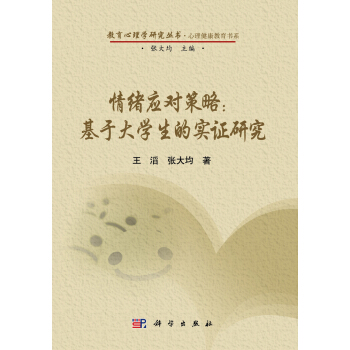
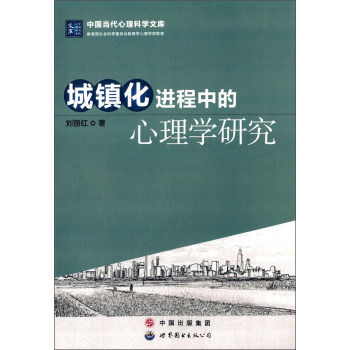
![幸福與成長:大學生心理健康教育讀本/麵嚮二十一世紀高等學校教材 [Happiness and Growth Mustered for Undergraduaters' Psychological Health] pdf epub mobi 電子書 下載](https://pic.tinynews.org/11451782/rBEbSlNx58UIAAAAAAHKw5TkKoQAAAnygMUqqgAAcrb920.jpg)
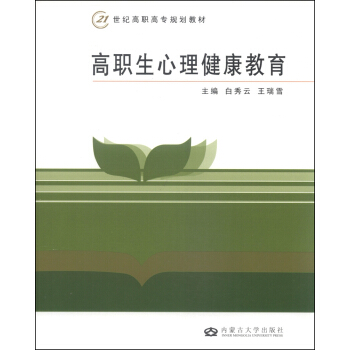
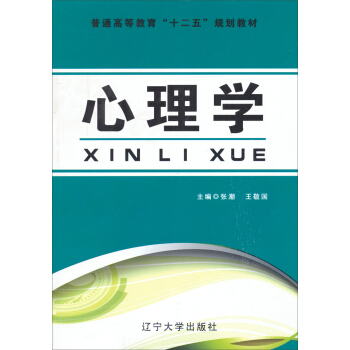

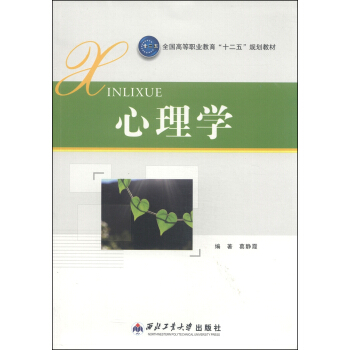


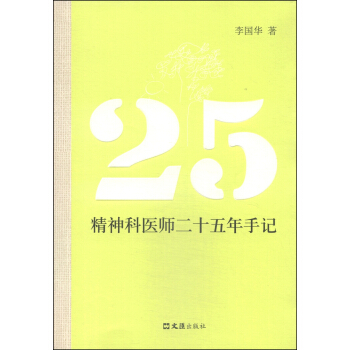


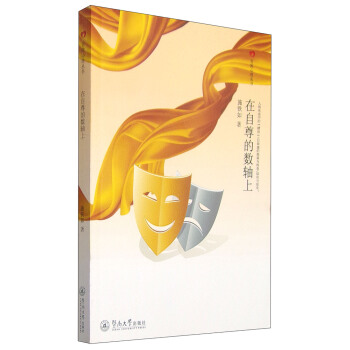
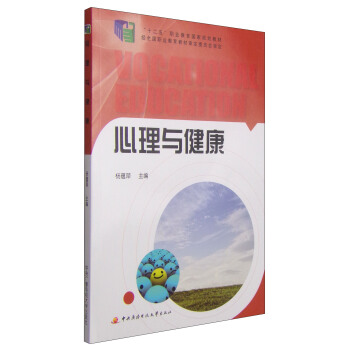
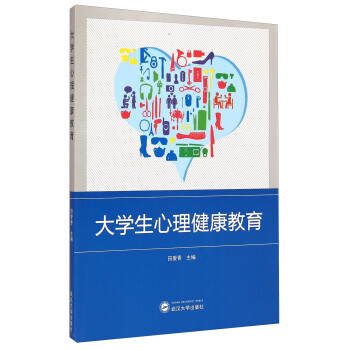
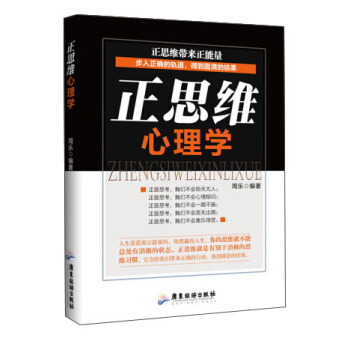
![生理心理學(第二版) [Physiological Psychology] pdf epub mobi 電子書 下載](https://pic.tinynews.org/11713950/559c72d1Nbca16257.jpg)

![高職學生心理素質教育 [The Psychological Quality Education of Higher Vocational Students] pdf epub mobi 電子書 下載](https://pic.tinynews.org/11773221/560bd073N80e11946.jpg)